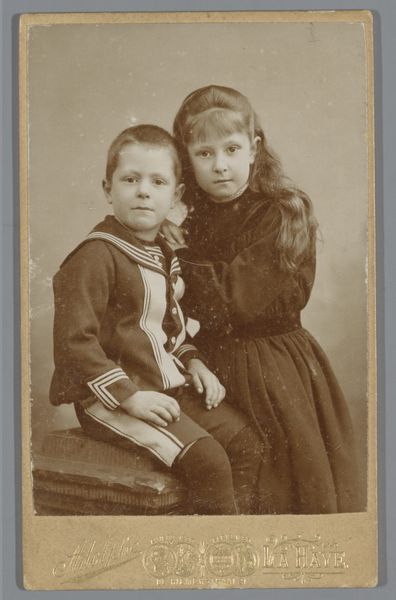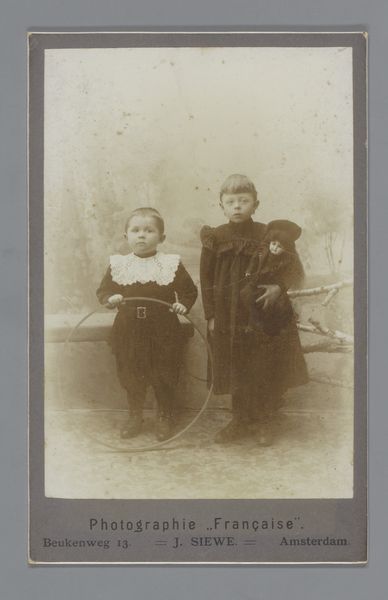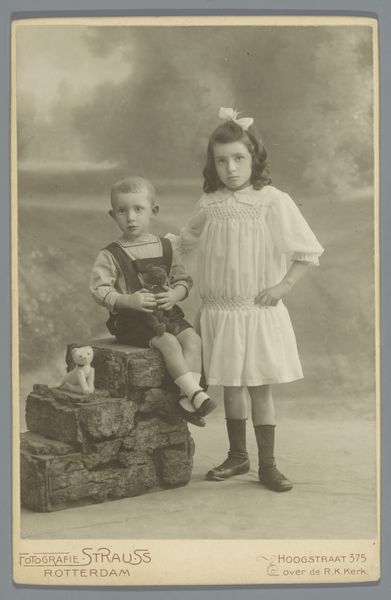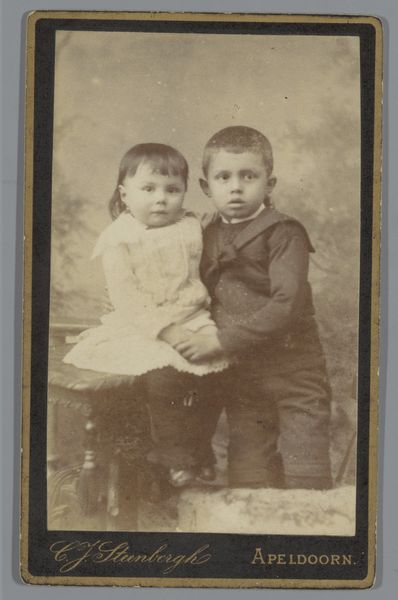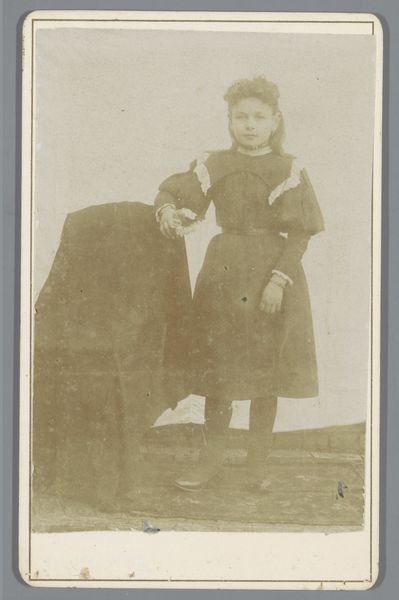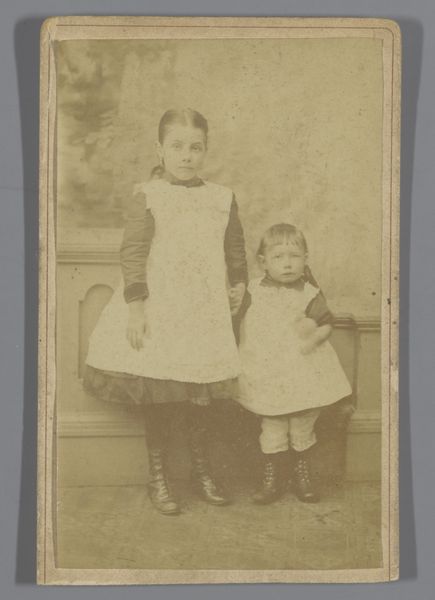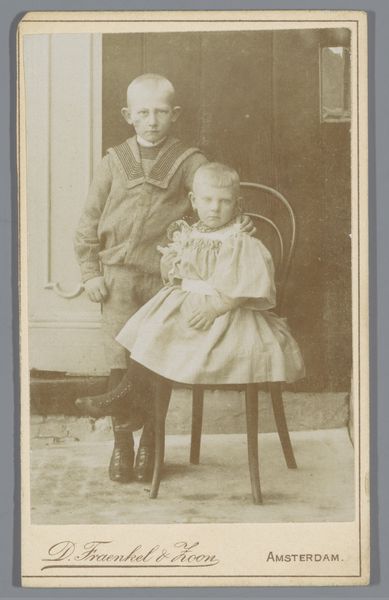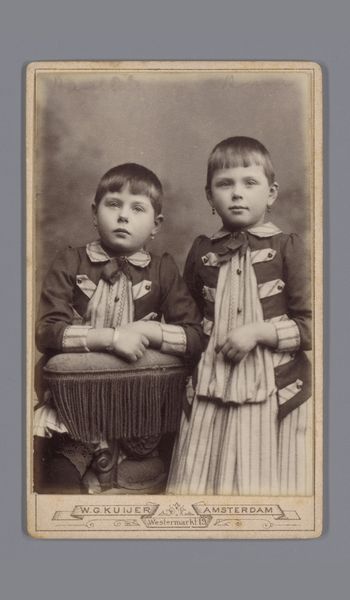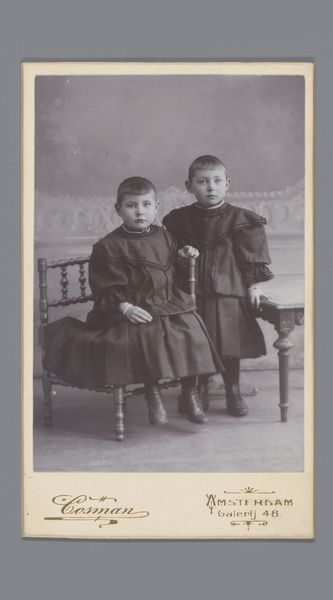
photography
#
portrait
#
photography
#
genre-painting
Dimensions: height 102 mm, width 62 mm
Copyright: Rijks Museum: Open Domain
Editor: This is "Portrait of Two Unknown Children," taken by Johannes Hendrikus Kramer between 1886 and 1901. It's a pretty formal photograph, and both children seem a bit…solemn. What do you see in this piece? Curator: I see a fascinating study in the visual language of childhood and status. Notice the accoutrements: the girl with her tiny parasol, a clear symbol of protection and, perhaps, delicacy; the boy in his sailor suit, a popular fashion for the era suggesting a connection to the navy and notions of exploration and perhaps adventure, however vicariously. They present an image that's carefully constructed. Editor: Constructed, how so? Curator: Consider the weight each prop carries. The umbrella might guard from rain, sure, but photographically, it speaks to preserving innocence. His suit is a cultural statement: a middle-class, potentially upwardly-mobile identity. What about their faces? Editor: Well, they both look rather serious for kids. Is that common? Curator: Absolutely. Smiling was rare in early photography—long exposure times made it impractical, but also, a solemn face was considered more dignified, reflecting ideals of decorum. Their stillness contrasts sharply with the implied movement suggested by the sailor suit and the implied purpose of an umbrella. It presents a strange dichotomy that's almost dreamlike in its dissonance. Does that resonate? Editor: I hadn't thought about it like that, but yes, it does. It makes the image far more complex. I just saw two kids, but they're presenting a story. Curator: Indeed. The power of visual symbols lies in their ability to subtly communicate narratives deeply ingrained in the culture that both the artist and his audience shared.
Comments
No comments
Be the first to comment and join the conversation on the ultimate creative platform.
